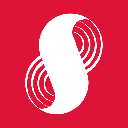-
 Bitcoin
Bitcoin $83,523.5086
0.19% -
 Ethereum
Ethereum $1,812.4637
-0.35% -
 Tether USDt
Tether USDt $0.9997
-0.01% -
 XRP
XRP $2.0714
1.26% -
 BNB
BNB $597.1799
-0.96% -
 USDC
USDC $1.0000
0.00% -
 Solana
Solana $117.3332
-1.14% -
 Dogecoin
Dogecoin $0.1653
0.22% -
 Cardano
Cardano $0.6598
1.67% -
 TRON
TRON $0.2384
1.30% -
 Toncoin
Toncoin $3.5295
-6.29% -
 UNUS SED LEO
UNUS SED LEO $9.3919
-0.36% -
 Chainlink
Chainlink $12.9924
0.15% -
 Stellar
Stellar $0.2615
-0.14% -
 Avalanche
Avalanche $18.5165
0.77% -
 Sui
Sui $2.2403
-2.65% -
 Shiba Inu
Shiba Inu $0.0...01227
0.33% -
 Hedera
Hedera $0.1633
0.24% -
 Litecoin
Litecoin $84.4347
0.79% -
 Polkadot
Polkadot $4.0746
1.71% -
 Bitcoin Cash
Bitcoin Cash $308.4069
1.35% -
 MANTRA
MANTRA $6.3375
-0.49% -
 Bitget Token
Bitget Token $4.5061
-0.56% -
 Dai
Dai $1.0000
0.00% -
 Ethena USDe
Ethena USDe $0.9995
-0.03% -
 Monero
Monero $215.5260
0.65% -
 Hyperliquid
Hyperliquid $11.7177
-1.56% -
 Uniswap
Uniswap $5.9675
-0.42% -
 Pi
Pi $0.5475
-13.02% -
 Aptos
Aptos $5.0529
-3.27%
How to analyze Bitcoin K-line charts?
Bitcoin K-line charts are essential for analyzing price trends and identifying trading opportunities through candlestick patterns, support/resistance levels, and volume analysis.
Mar 29, 2025 at 04:21 am
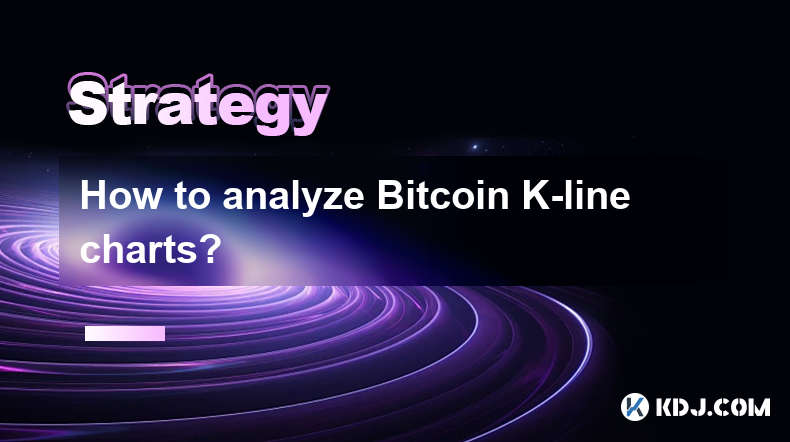
Understanding Bitcoin K-Line Charts: A Beginner's Guide
Bitcoin K-line charts, also known as candlestick charts, are a fundamental tool for technical analysis in the cryptocurrency market. They provide a visual representation of price movements over specific time periods, revealing valuable insights into market trends and potential trading opportunities. Understanding how to interpret these charts is crucial for any serious Bitcoin investor or trader. This guide will break down the key elements and techniques for analyzing Bitcoin K-line charts effectively.
Deciphering Candlestick Patterns
Each candlestick on a Bitcoin K-line chart represents a specific time period (e.g., 1-minute, 1-hour, 1-day). The body of the candlestick shows the price range between the open and close of that period. A green candlestick indicates a closing price higher than the opening price (bullish), while a red candlestick shows a closing price lower than the opening price (bearish). The wicks (or shadows) above and below the body represent the high and low prices reached during that period.
Analyzing individual candlesticks can provide short-term insights. However, the real power of K-line charts lies in identifying patterns formed by multiple candlesticks. These patterns often suggest potential future price movements. Common patterns include:
- Doji: A candlestick with nearly equal opening and closing prices, often indicating indecision in the market.
- Hammer: A candlestick with a long lower wick and a small body, suggesting a potential price reversal to the upside.
- Hanging Man: Similar to a hammer, but appearing at the top of an uptrend, suggesting a potential reversal to the downside.
- Engulfing Pattern: A candlestick whose body completely engulfs the body of the previous candlestick, often indicating a strong trend reversal.
Recognizing these and other patterns requires practice and experience. It's crucial to consider the context of the pattern within the broader market trend.
Identifying Support and Resistance Levels
Support and resistance levels are crucial concepts in technical analysis. Support levels represent price points where buying pressure is strong enough to prevent further price declines. Resistance levels are price points where selling pressure is strong enough to prevent further price increases. These levels are often identified by horizontal lines drawn across the chart, connecting previous price highs (resistance) and lows (support).
Breaks above resistance levels often signal bullish momentum, while breaks below support levels often signal bearish momentum. However, it's important to note that these levels can be dynamic and shift over time. Multiple touches of a support or resistance level can strengthen its significance. A strong break of a major support or resistance level often leads to more significant price movements.
Using Moving Averages
Moving averages are calculated by averaging the closing prices over a specific period (e.g., 50-day, 200-day moving average). They smooth out price fluctuations and help identify the overall trend. Commonly used moving averages include the simple moving average (SMA) and the exponential moving average (EMA).
The intersection of different moving averages can provide trading signals. For example, a bullish crossover occurs when a shorter-term moving average crosses above a longer-term moving average, suggesting a potential uptrend. A bearish crossover occurs when the opposite happens, suggesting a potential downtrend.
Remember that moving averages are lagging indicators; they react to past price movements rather than predicting future movements. Therefore, it's crucial to use them in conjunction with other technical indicators and analysis methods.
Incorporating Volume Analysis
Volume analysis is crucial for confirming price movements identified through candlestick patterns and moving averages. High volume accompanying a price increase confirms the strength of the bullish move, while high volume accompanying a price decrease confirms the strength of the bearish move. Low volume during price movements often indicates weak momentum and potential reversals.
Combining volume analysis with candlestick patterns can significantly improve the accuracy of your predictions. For instance, a strong bullish candlestick pattern accompanied by high volume is a more significant bullish signal than the same pattern with low volume. This helps filter out false signals and identify more reliable trading opportunities.
Timeframe Considerations
The timeframe you choose for your K-line chart significantly impacts your analysis. Shorter timeframes (e.g., 1-minute, 5-minute) are suitable for short-term trading strategies, focusing on quick price fluctuations. Longer timeframes (e.g., daily, weekly, monthly) are better suited for long-term investment strategies, focusing on overall market trends.
Different timeframes can provide complementary perspectives. For example, a daily chart might show an overall uptrend, while a 5-minute chart might reveal short-term pullbacks within that trend. Analyzing multiple timeframes simultaneously can provide a more comprehensive understanding of the market.
Combining Technical Indicators
While candlestick patterns, support/resistance levels, moving averages, and volume analysis are powerful tools, combining them with other technical indicators can further enhance your analysis. Popular indicators include Relative Strength Index (RSI), MACD, Bollinger Bands, and others. Each indicator provides unique insights into market momentum, overbought/oversold conditions, and volatility.
However, remember that relying solely on technical indicators can be risky. It's crucial to understand the underlying principles of each indicator and use them judiciously, considering their limitations and potential biases. Over-reliance on indicators without considering fundamental analysis can lead to inaccurate predictions and poor trading decisions.
Risk Management and Discipline
Analyzing Bitcoin K-line charts is a skill that takes time and practice to master. Even with thorough analysis, there's always inherent risk in trading cryptocurrencies. Therefore, implementing a robust risk management strategy is paramount. This includes setting stop-loss orders to limit potential losses, diversifying your portfolio, and only investing capital you can afford to lose. Maintaining discipline and avoiding emotional trading decisions is crucial for long-term success.
Frequently Asked Questions
Q: What are the most important things to look for on a Bitcoin K-line chart?
A: The most important elements are candlestick patterns, support and resistance levels, volume, and the overall trend indicated by moving averages. Consider the interplay of these elements for a comprehensive analysis.
Q: How do I identify support and resistance levels accurately?
A: Support levels are typically identified by previous price lows where buying pressure prevented further declines. Resistance levels are identified by previous price highs where selling pressure prevented further increases. Look for areas where the price has bounced off multiple times.
Q: What are the limitations of using only technical analysis on Bitcoin K-line charts?
A: Technical analysis alone doesn't account for external factors influencing Bitcoin's price, such as regulatory changes, market sentiment, or technological developments. Fundamental analysis should also be considered.
Q: Which timeframe is best for analyzing Bitcoin K-line charts?
A: The optimal timeframe depends on your trading strategy. Short-term traders may prefer shorter timeframes (e.g., 5-minute, 15-minute), while long-term investors may prefer longer timeframes (e.g., daily, weekly). Analyzing multiple timeframes simultaneously provides a more holistic view.
Q: How can I improve my K-line chart analysis skills?
A: Practice is key. Start by analyzing historical data, focusing on identifying patterns and understanding how different indicators interact. Backtesting trading strategies based on your analysis can further refine your skills. Consider using charting software and educational resources to enhance your understanding.
Disclaimer:info@kdj.com
The information provided is not trading advice. kdj.com does not assume any responsibility for any investments made based on the information provided in this article. Cryptocurrencies are highly volatile and it is highly recommended that you invest with caution after thorough research!
If you believe that the content used on this website infringes your copyright, please contact us immediately (info@kdj.com) and we will delete it promptly.
- VanEck Files for the First-Ever U.S.-Based Binance Coin (BNB) ETF, Opening New Avenues for Cryptocurrency Investment
- 2025-04-04 16:10:12
- Fil Dor Might Not Be the First Name Jumping Out of the Racecard When You Scan the 2025 Grand National Entries
- 2025-04-04 16:10:12
- Kaanch Network ($KNCH) — The Next Bitcoin or Ethereum?
- 2025-04-04 16:05:11
- Pepe (PEPE) Price Plunges Over 6% to Trade at $0.000006717 as Investors Decrease Their Exposure to the Meme Coin
- 2025-04-04 16:05:11
- Ripple Labs Settles with the SEC for $50M, But XRP's Price Remains Stagnant, Puzzling Investors.
- 2025-04-04 16:00:11
- There are four Coin Master links that offer rewards
- 2025-04-04 16:00:11
Related knowledge
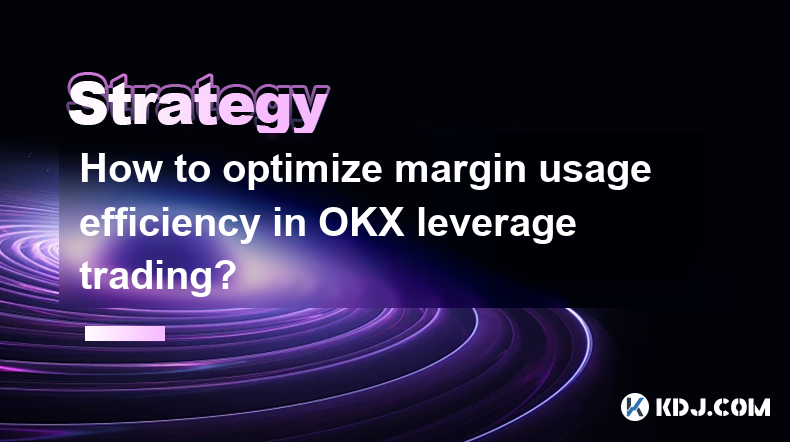
How to optimize margin usage efficiency in OKX leverage trading?
Apr 04,2025 at 03:21pm
Margin usage efficiency is a critical aspect of leverage trading on platforms like OKX, where traders aim to maximize their returns while managing risk. Understanding how to optimize margin usage can significantly enhance your trading performance. This article will delve into various strategies and techniques to help you make the most out of your margin...
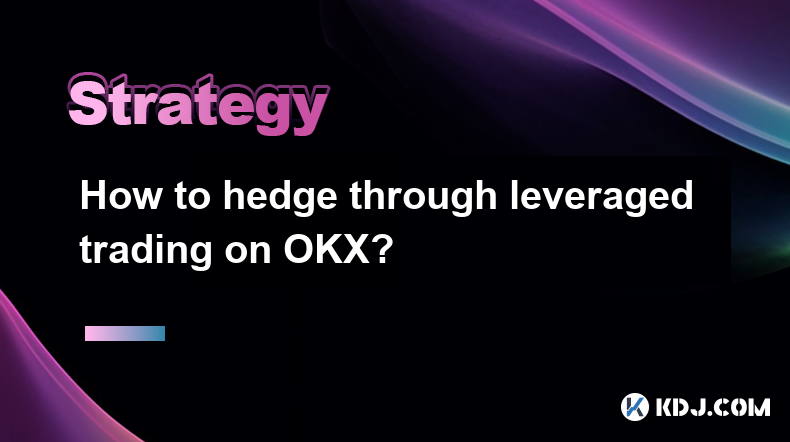
How to hedge through leveraged trading on OKX?
Apr 04,2025 at 01:42pm
Hedging through leveraged trading on OKX can be an effective strategy for managing risk in the volatile cryptocurrency market. This article will guide you through the process of setting up and executing a hedging strategy using OKX's leveraged trading features. We will cover the basics of leveraged trading, how to set up a hedge, and the steps to execut...
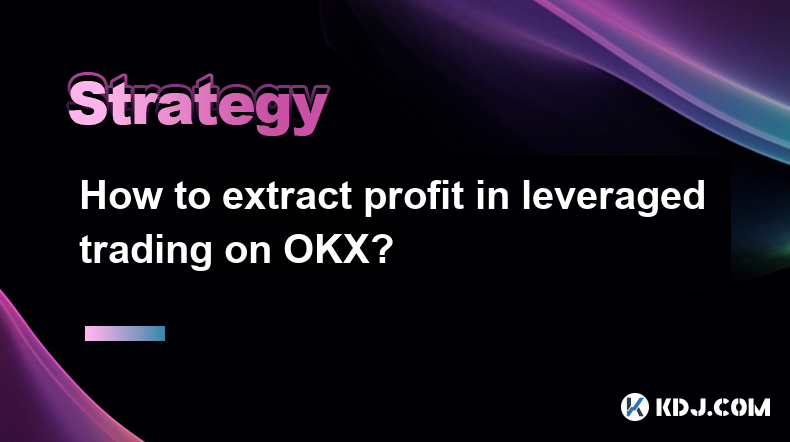
How to extract profit in leveraged trading on OKX?
Apr 04,2025 at 05:42am
Leveraged trading on OKX can be a powerful tool for traders looking to amplify their potential profits. However, it also comes with increased risk, making it essential to understand how to effectively extract profit from these trades. This article will guide you through the process of leveraging OKX's platform to maximize your gains while managing the i...
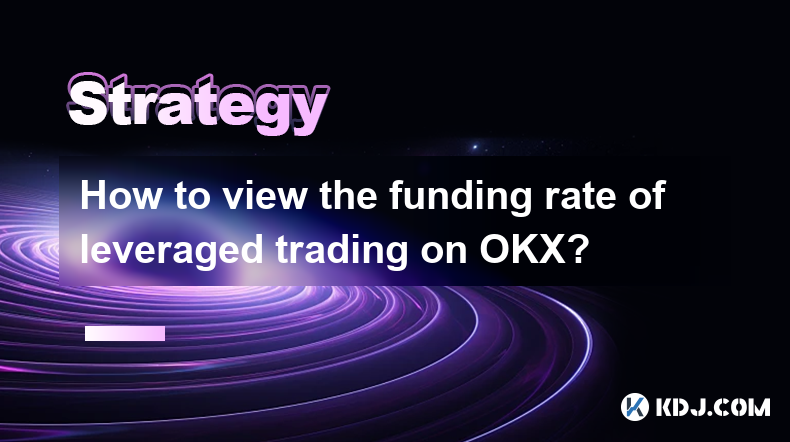
How to view the funding rate of leveraged trading on OKX?
Apr 04,2025 at 07:07am
Understanding the funding rate is crucial for anyone involved in leveraged trading on OKX. The funding rate is a mechanism used in perpetual futures contracts to ensure that the market price of the futures remains closely aligned with the spot price of the underlying asset. This article will guide you through the process of viewing the funding rate on O...

How to use the three crows candlestick combination to determine the market top?
Apr 03,2025 at 03:18pm
Three Black Crows are a classic K-line combination form that is often used to judge the top of the market in technical analysis. This pattern consists of three consecutive negative lines, the opening price of each negative line is within the entity of the previous K-line, and the closing price gradually decreases. This pattern usually appears at the end...
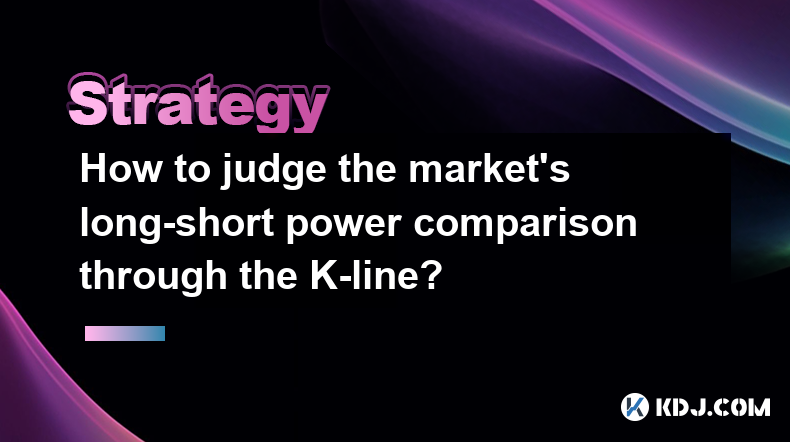
How to judge the market's long-short power comparison through the K-line?
Apr 03,2025 at 02:39pm
Judging the market's long-short power comparison through the K-line is an important skill in technical analysis. The K-line chart can not only show price changes, but also reflect the emotions and power comparison of market participants. This article will introduce in detail how to judge the market's long-short power comparison through K-lines. ...

How to optimize margin usage efficiency in OKX leverage trading?
Apr 04,2025 at 03:21pm
Margin usage efficiency is a critical aspect of leverage trading on platforms like OKX, where traders aim to maximize their returns while managing risk. Understanding how to optimize margin usage can significantly enhance your trading performance. This article will delve into various strategies and techniques to help you make the most out of your margin...

How to hedge through leveraged trading on OKX?
Apr 04,2025 at 01:42pm
Hedging through leveraged trading on OKX can be an effective strategy for managing risk in the volatile cryptocurrency market. This article will guide you through the process of setting up and executing a hedging strategy using OKX's leveraged trading features. We will cover the basics of leveraged trading, how to set up a hedge, and the steps to execut...

How to extract profit in leveraged trading on OKX?
Apr 04,2025 at 05:42am
Leveraged trading on OKX can be a powerful tool for traders looking to amplify their potential profits. However, it also comes with increased risk, making it essential to understand how to effectively extract profit from these trades. This article will guide you through the process of leveraging OKX's platform to maximize your gains while managing the i...

How to view the funding rate of leveraged trading on OKX?
Apr 04,2025 at 07:07am
Understanding the funding rate is crucial for anyone involved in leveraged trading on OKX. The funding rate is a mechanism used in perpetual futures contracts to ensure that the market price of the futures remains closely aligned with the spot price of the underlying asset. This article will guide you through the process of viewing the funding rate on O...

How to use the three crows candlestick combination to determine the market top?
Apr 03,2025 at 03:18pm
Three Black Crows are a classic K-line combination form that is often used to judge the top of the market in technical analysis. This pattern consists of three consecutive negative lines, the opening price of each negative line is within the entity of the previous K-line, and the closing price gradually decreases. This pattern usually appears at the end...

How to judge the market's long-short power comparison through the K-line?
Apr 03,2025 at 02:39pm
Judging the market's long-short power comparison through the K-line is an important skill in technical analysis. The K-line chart can not only show price changes, but also reflect the emotions and power comparison of market participants. This article will introduce in detail how to judge the market's long-short power comparison through K-lines. ...
See all articles

















































































